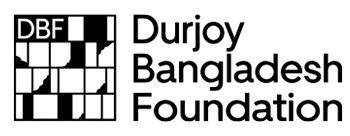‘Elephant in the room” is a biting commentary on the problems we are dwelling with. For this installation project, a year and a half was spent exchanging the clothes of refugees, including Rohingya people (Muslims fleeing Myanmar), for new clothes. The refugees’ clothes were turned into a huge piece of fabric decorated with traditional Bangladeshi Kantha embroidery. The embroidery turned into a language that structured different aspects of everyday life. He further used the Kantha to decorate three elephants of three different sizes. Through this, he is shading light on the people who are living under the poverty line and are devoid of basic human rights. Shadhin’s installation turns old clothes into a monument to a humanitarian and political catastrophe.

Kamruzzaman Shadhin
Born in 1974 in Thakurgaon, Bangladesh, Kamruzzaman Shadhin graduated from the Faculty of Fine Arts, Dhaka University with his BFA in 1996, and MFA in 1999.
In 2001, he founded Gidree Bawlee Foundation of Arts, an organization focused on social practice and community art in Bangladesh which realized community-based projects and residencies in his village in Thakurgaon. His first solo exhibition ‘Rooted in Soil’, was held at the Alliance Française de Dhaka, Bangladesh in 2016. His recent exhibitions include: ‘Fabricated Fractures’, Concrete, Alserker Avenue, Dubai 2019; ‘Fabric of Felicity’, Garage Museum of Contemporary Art, Moscow 2018; Dhaka Art Summit 2018; ‘Transformation/Reformation’, Leipzig, Germany, 2017; ‘Intl. Solo Festival’, BACC, Thailand 2016. He was awarded the Grand Prize at the 17th Asian Art Biennale, Dhaka (2016)
Elephant in the Room

Artist Art Style
Kamruzzaman Shadhin is working in installation, performance, video, sculpture, and public art interventions. His work maintains a satirical edge, dealing directly with the politics of environmental degradation and destruction, and its effects on communities across Bangladesh. His art projects are often created through public participation and are exhibited in public spaces where the audiences are the general public and surrounding communities. Migration, social justice, and local history are recurring themes in his works. In the last few years, the traditional crafts of the region and their underlying relationship with the history of this land have become a major part of his artistic research and journey.
